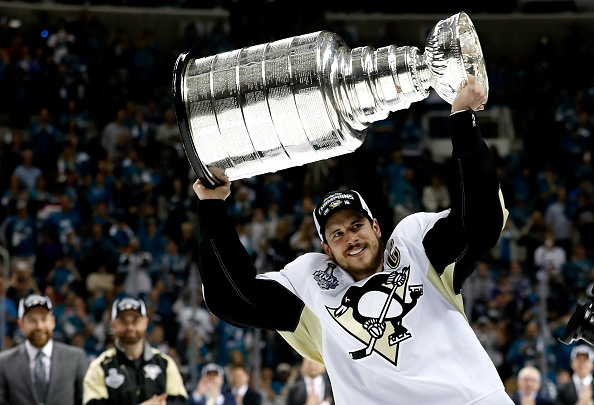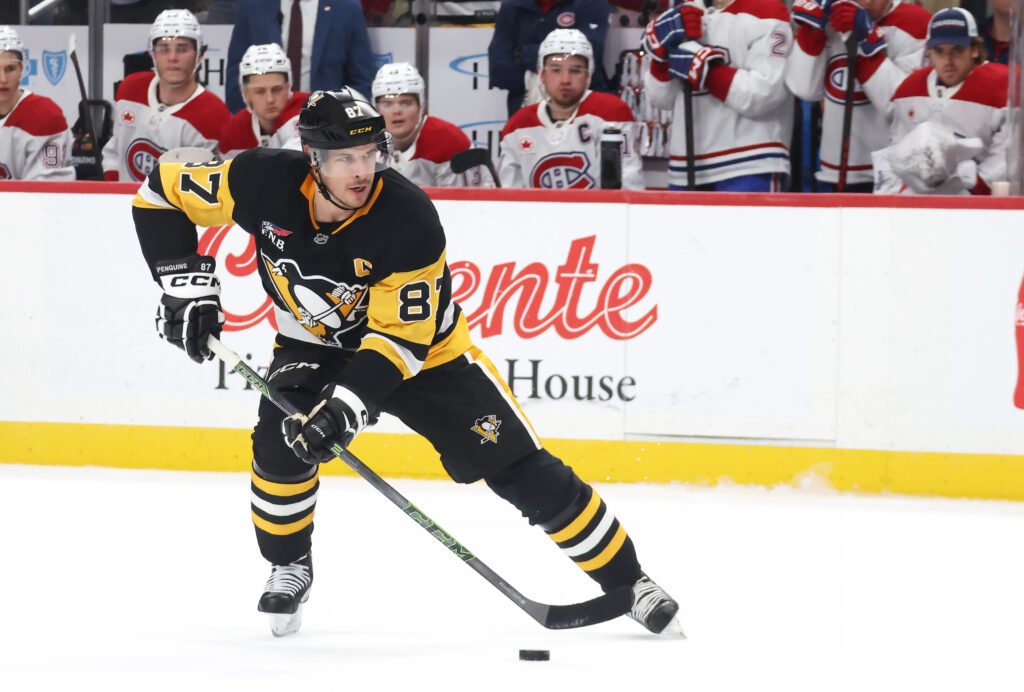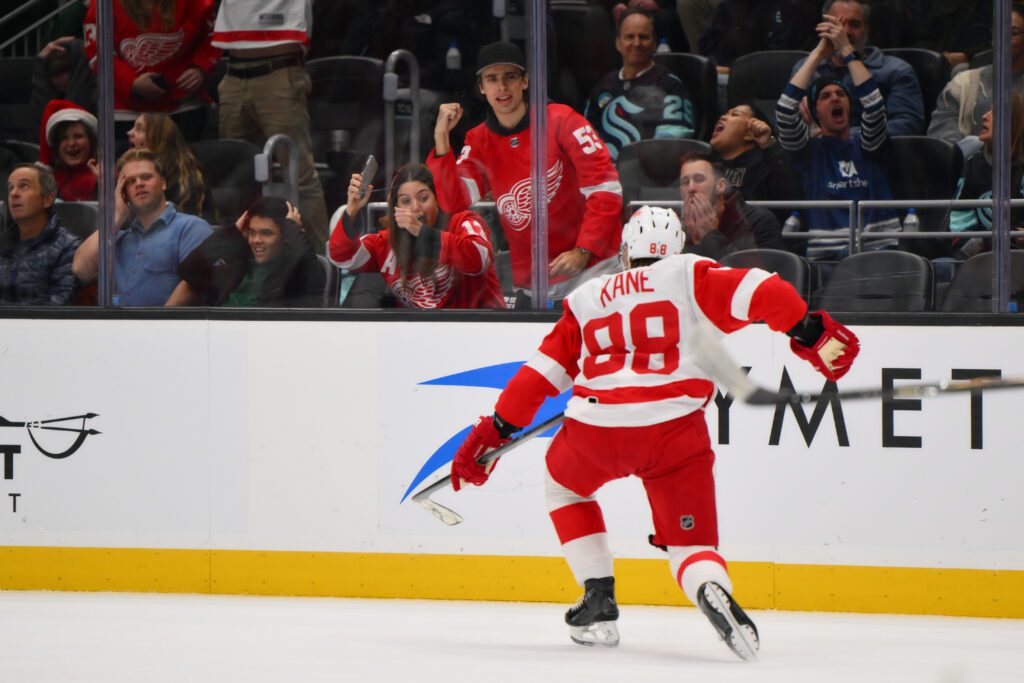Part 2 of Every Future Hockey Hall of Fame Centre reveals the names of several no-brainer selections frequently debated as question marks: the article can be found here.
The inspiration for this listicle came from a spreadsheet: to test my Excel VBA skills, I reduced the 417 members of the Hockey Hall of Fame documented on Hockey-Reference.com down to the 234 individuals who skated at least one National Hockey League game. Then, from the first and last year of each career, I attempted to interpret the percentage of Hall-bound superstars from the pool of all active NHL professionals throughout 104 seasons of play.
Every Future Hockey Hall of Fame Centre, Part One
The premise that a data set of basic scoring statistics might reveal an objective standard of a “Hockey Hall of Fame career” has limitations. No adjustments were made for players such as Mario Lemieux who retired and un-retired mid-career, nor were inductees catalogued by primary position played, therefore failing to account for the well-documented relative under-representation of goaltenders in the museum.
Nevertheless, the story of professional sports told through inductions into the Hockey Hall of Fame is a story of expansion; from the NHL’s founding in 1917 where nineteen of the league’s forty-five pioneers received induction; to the 1967-68 season when a forty-plus year standard of exceeding the 75th percentile jumped to the 87th after the number of teams doubled; to 2004 where only four percent of 1,010 total players heard the call.
This last plateau, established during the Hockey Hall of Fame-certified dynasties of the Montréal Canadiens, New York Islanders and Edmonton Oilers, forms the basis for the magic number that grants this list merit: fifty. At a time where one thousand players annually cash NHL cheques, history suggests the special few most worthy of immortality performed at the 95th percentile or higher, roughly the top-fifty league-wide or top-ten at each position, for a span of at least five years at the peaks of their careers.
This list, therefore, considers accounts of each player’s esteem from their peers and the media during their careers through annual polls and PHWA awards in concert with statistical production in the regular season and playoffs. One Olympic gold-medallist who will not appear is Patrick Marleau. Throughout the most competitive period of San Jose Sharks hockey, 2009 to 2011, Marleau was primarily fixed at left-wing to someone who will appear on part two of this list. Don’t expect Brad Marchand either, who received a single third-place vote at centre in 2016-17 All-Star Team balloting. Enjoy the first eight names, characterized by monstrous regular-season point production.
Sidney Crosby, Pittsburgh Penguins
The sterling résumé of one of hockey’s all-time great floor-raisers, specifically the timing of his numerous Stanley Cup and international successes, arguably downplays the alien level Crosby played at during his concussion-shortened 2010-11 season, where in the midst of the longest point streak in eighteen years he potted 26 goals and 24 assists for 50 points in 25 games. There is little to mention about Crosby’s passing, balance, and hand-eye coordination that has not been marvelled at millions of times over: following his career from prep to pro, from superstar to veteran, has been a pleasure.
Connor McDavid, Edmonton Oilers
The consensus best player in hockey for the last five seasons, evidenced by his two Hart Memorial Trophy wins for most valuable player and three Ted Lindsay Award wins for most outstanding regular-season player, has only one centre within 130 points of his production since his debut: that centre has also played 35 more games than McDavid. Fresh off a 56-game season where he accumulated a mercurial 105 points, 36 of these in a 14-game stretch, McDavid will ride the most electric scoring pace hockey has seen since prime Mario Lemieux to an ungodly number of MVP finalist selections.
Leon Draisaitl, Edmonton Oilers
The aforementioned only centre within 130 points of McDavid’s seven-year point production has been difficult to ignore as a top-five option since his Hart Trophy win in 2019-20. As his even-strength deployment alongside Connor has decreased, fans have been treated to more frequent displays of Leon’s speed and stickhandling, complements to his famed no-windup one-timer and backhand saucer passing. For brevity’s sake, conspiracies regarding Draisaitl’s superior postseason performance relative to McDavid are best discussed on a more adversarial platform, like Twitter.
Nathan MacKinnon, Colorado Avalanche
Speaking of playoff hockey, this list’s second restaurant spokesperson has been widely upheld as a top-three NHL player for the last three to five seasons fans, media, and players alike on the strength of postseason performances that surpass perhaps all his 2010s contemporaries, competition aside. MacKinnon’s all-around greatness and the goodwill of the Avalanche franchise at-large will not only bring a third Stanley Cup to Denver but also at least one Hart Trophy to Nathan, whether earned Mario-style or Messier-style.
Auston Matthews, Toronto Maple Leafs
The only centre within 30 goals of Matthews in the time since the 2016 first-overall draft pick entered the league has also played nearly 40 more games. In the last three years, Matthew’s individual per-game goal-scoring rates rank as the seventh-best, second-best, and number-one most prolific non-Mario seasons among centres since 1994-95. Leafs fans should take joy in having secured a franchise-altering star for the next ten years.
Evgeni Malkin, Pittsburgh Penguins
Malkin spent his first six seasons in Pittsburgh as a top-three NHL player collecting nearly every prize available, including the 2006-07 Calder Memorial Trophy for the top rookie, two Art Ross Trophies as the league’s leading point-scorer, the 2008-09 Stanley Cup and Conn Smythe Trophy for playoff MVP, the 2011-12 Hart Trophy and Lindsay, and the 2012 IIHF World Championship. The argument that Malkin was snubbed by the NHL’s official list of its 100 Greatest Players at its 2017 centennial is compelling.
Steven Stamkos, Tampa Bay Lightning
No player in hockey scored more goals between 2009-10 and 2013-14 than Stamkos, including Alexander Ovechkin, who scored seven less in twenty-four more games. Amongst centres, Stamkos led second-best in that span with 49 more goals in 45 fewer games, staking performances that helped him earn Second All-Star Team honours twice, two Rocket Richard Trophies for leading the league in goals, and thankfully two Stanley Cup rings years later to offset the injustice of claiming zero Olympic gold medals.
Jonathan Toews, Chicago Blackhawks
During his nine-season span of all-around excellence, Chicago’s captain consolidated one of the most impressive winning records in modern NHL history: five conference finals appearances with three Stanley Cups and the 2010 Conn Smythe, a Presidents Trophy for best regular-season record, a Frank J. Selke Trophy out of four nominations for defensive skill by a forward, and the record for fastest and youngest player to attain Triple Gold Club membership, thanks to a 2007 World Championship victory and his first of two Olympic medals at Vancouver 2010. Hopefully, Toews’ comparatively modest counting statistics will never provide cause for future fans to reappraise his unchallenged label as ice hockey’s number-two centre from 2013 to 2015.
To Be Continued…
Decades ago when Forsberg, Lindros, Sakic, and Sundin were tearing up the opposition, it might have been difficult to imagine future generations transitioning to the pros as ready as themselves.
However, without overblowing the current state of hockey with clichés, today’s young players have captivated our collective attention just as quickly. Foremost amongst these honorable mentions is Brayden Point, Stamkos’ Lightning teammate and maker of playoff magic, shaking off Tampa’s torrid 2019 collapse against the Columbus Blue Jackets to deliver a quintuple overtime goal and a narrow runner-up nod in Conn Smythe voting the next year, and the second-longest playoff goal-scoring streak in 2021 during Tampa’s second straight Cup run.
In the Metropolitan Division, Sebastian Aho is spearheading a stark turn in the fortunes of Carolina hockey that for my money will lead the Hurricanes to a Stanley Cup Final appearance; while Jack Eichel could not spark a similar revival for the Buffalo Sabres, look for his skill set to gain greater favour on the Vegas Golden Knights. Aleksander Barkov, having shed the “underrated” label to earn greater respect from fans and players, is primed to push the Florida Panthers to the Stanley Cup Second Round for the first time since 1996.
[wpdiscuz-feedback id=”rcda6pd5e6″ question=”Could these two end up on a future list such as this?” opened=”0″]On the flip side, Mathew Barzal and Elias Petterson of the New York Islanders and Vancouver Canucks respectively are both striving to push their franchises beyond their 2020 playoff heights. Time will reveal the athletes best-equipped to join the ranks of their idols.[/wpdiscuz-feedback]
Main Photo:



